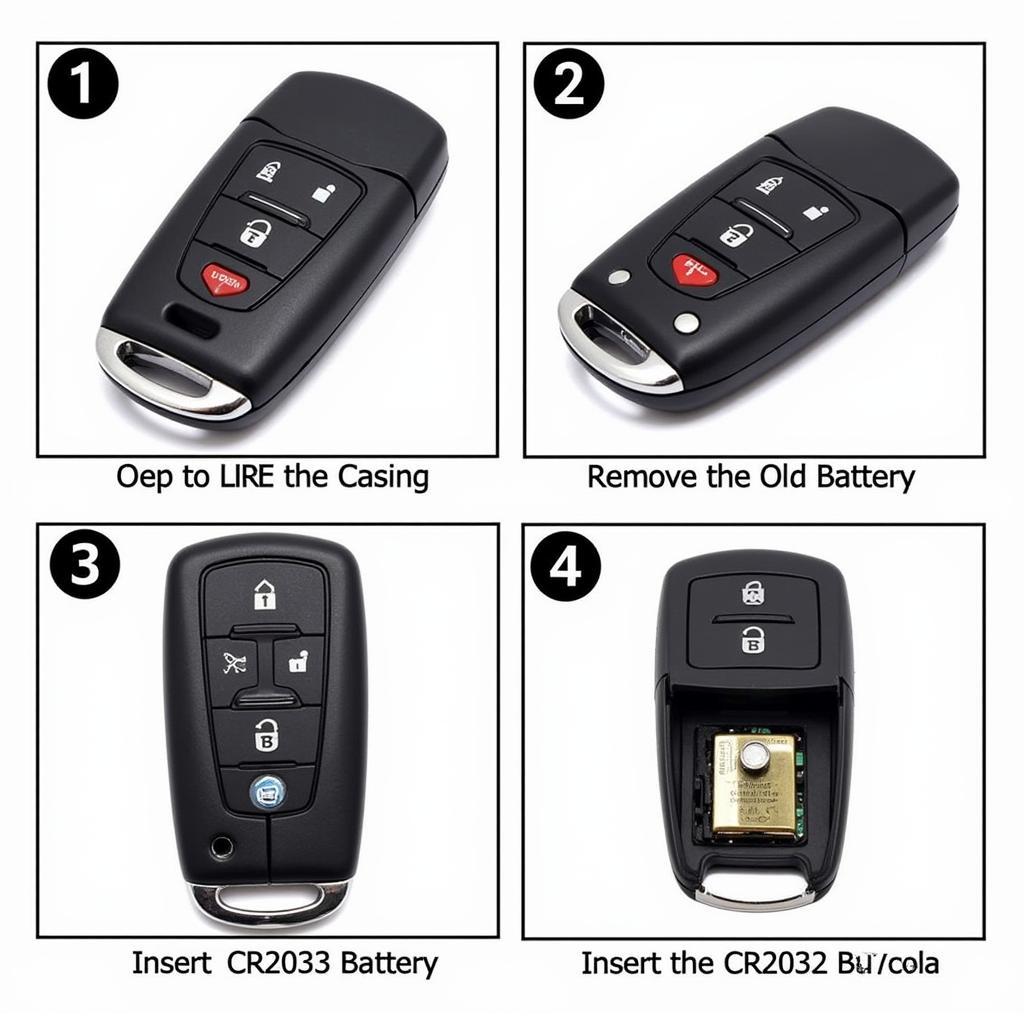Corroded car battery symptoms can be a real headache, leaving you stranded and frustrated. This guide will help you identify, understand, and address these issues, getting you back on the road quickly and safely. We’ll delve into the causes, consequences, and solutions for a corroded car battery, empowering you to take control of your vehicle’s health.
Identifying Corroded Car Battery Symptoms
Corrosion, often appearing as a white, blue, or greenish powdery substance around the battery terminals, is a common problem. This buildup can disrupt the flow of electricity, leading to a range of issues. One of the first corroded car battery symptoms you might notice is difficulty starting your car. The engine may crank slowly or not at all.  Close-up of corroded car battery terminals showing white, blue, and green powdery buildup
Close-up of corroded car battery terminals showing white, blue, and green powdery buildup
Dim headlights or interior lights, especially when the engine isn’t running, can also indicate a corroded battery. This is due to the reduced power flow caused by the corrosion. Other electrical components might also malfunction, such as the radio or power windows. If your car exhibits any of these signs of a bad battery vs alternator, it’s important to inspect your battery for corrosion.
A clicking sound when you turn the key is another classic symptom. This sound often indicates that the battery doesn’t have enough power to engage the starter motor, a common issue with corroded terminals.
Understanding the Causes of Battery Corrosion
Several factors contribute to battery corrosion. One common culprit is hydrogen gas released from the battery during charging. This gas reacts with the lead battery terminals, creating lead sulfate, which appears as the white, powdery substance.  Diagram illustrating hydrogen gas leaking from a car battery
Diagram illustrating hydrogen gas leaking from a car battery
Extreme temperatures, both hot and cold, can accelerate the corrosion process. Overcharging, often due to a faulty voltage regulator, can also lead to excessive hydrogen gas production, worsening corrosion.
How a Corroded Battery Affects Your Car
Ignoring corroded car battery symptoms can lead to more significant problems. The corrosion can eventually damage the battery terminals and cables, requiring costly replacements. A weak battery can also put extra strain on the alternator, potentially shortening its lifespan. For more information on the relationship between your battery and alternator, see if a weak battery affect the alternator. does a weak battery affect the alternator
Furthermore, a corroded battery can prevent your car from starting, leaving you stranded. In extreme cases, a severely corroded battery can even lead to electrical shorts, posing a fire hazard.
Cleaning a Corroded Car Battery
Cleaning a corroded battery is a relatively simple process. First, disconnect the negative battery cable followed by the positive cable. Next, mix baking soda and water to create a paste. Apply the paste to the corroded terminals and scrub with a wire brush. Rinse the terminals with clean water and dry thoroughly. Reconnect the positive cable first, then the negative cable. If you are uncomfortable performing this task yourself, consult a qualified mechanic.
Preventing Battery Corrosion
Preventing corrosion is key to maintaining a healthy battery. Regularly inspect your battery for signs of corrosion. Keep the terminals clean and dry. Apply a battery terminal protector spray or grease to prevent corrosion buildup. Addressing a car not starting after jumping battery can also involve checking for corrosion. Check out our guide on car not starting after jumping battery for more insights. car not starting after jumping battery Ensure your charging system is functioning correctly to avoid overcharging.
Conclusion
Corroded car battery symptoms should never be ignored. By understanding the causes, consequences, and solutions for battery corrosion, you can keep your car running smoothly and avoid costly repairs. Remember to regularly inspect your battery and take preventative measures to ensure a long and healthy battery life. Don’t let a corroded battery leave you stranded. If you are experiencing persistent battery problems, consult with a qualified auto technician for further diagnostics and repair. If you own a 2013 Dodge Journey and are experiencing battery drain, we have a dedicated resource for you: 2013 dodge journey battery drain. 2013 dodge journey battery drain Another common issue is the c230 alternator battery warning; learn more about it on our website. c230 alternator battery warning Addressing these issues proactively can save you time and frustration down the road. Don’t let corroded car battery symptoms take you by surprise!
FAQ
- What does battery corrosion look like? Battery corrosion typically appears as a white, blue, or greenish powdery substance around the battery terminals.
- Can I drive with a corroded battery? While you might be able to drive short distances, a corroded battery will eventually lead to starting problems and other issues. It’s best to address the corrosion as soon as possible.
- How often should I clean my car battery terminals? It’s recommended to inspect and clean your battery terminals every few months, or more frequently if you live in an area with extreme temperatures.
- Can I clean corroded battery terminals myself? Yes, cleaning battery terminals is a relatively simple process that can be done with basic tools and household materials.
- What causes car battery corrosion? The primary cause is hydrogen gas released from the battery reacting with the lead terminals, creating lead sulfate.
- How can I prevent car battery corrosion? Regular cleaning, applying a protective spray or grease, and ensuring a properly functioning charging system can help prevent corrosion.
- What should I do if my car won’t start even after cleaning the battery terminals? If cleaning the terminals doesn’t solve the problem, the battery itself may be faulty and need replacement. Consult a qualified mechanic for further diagnosis.

